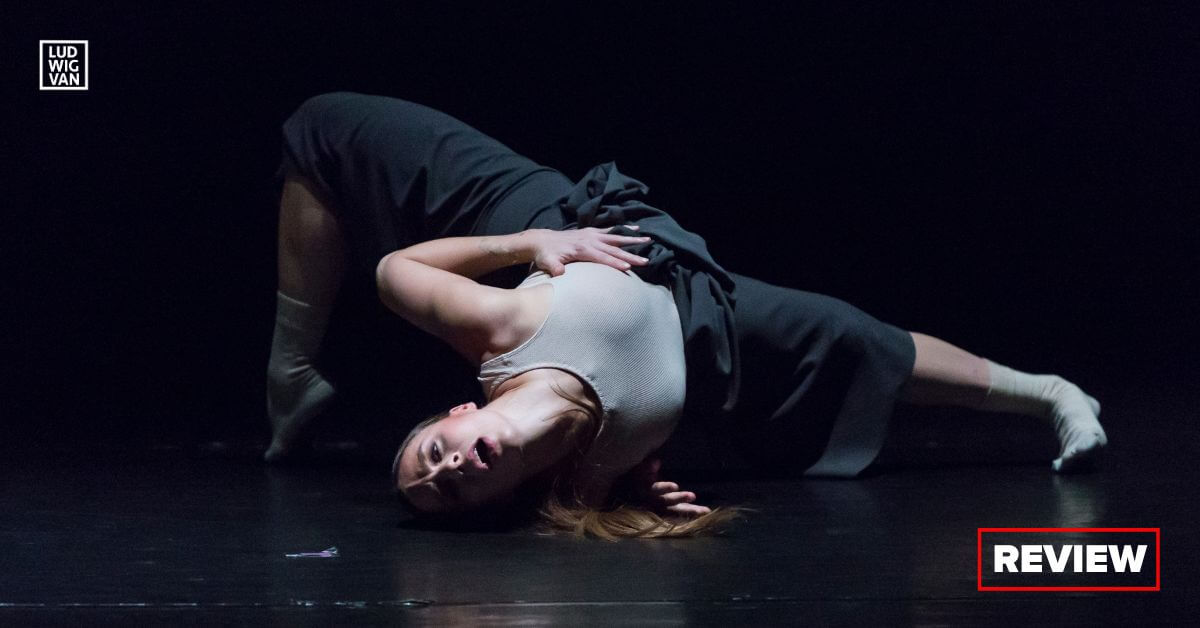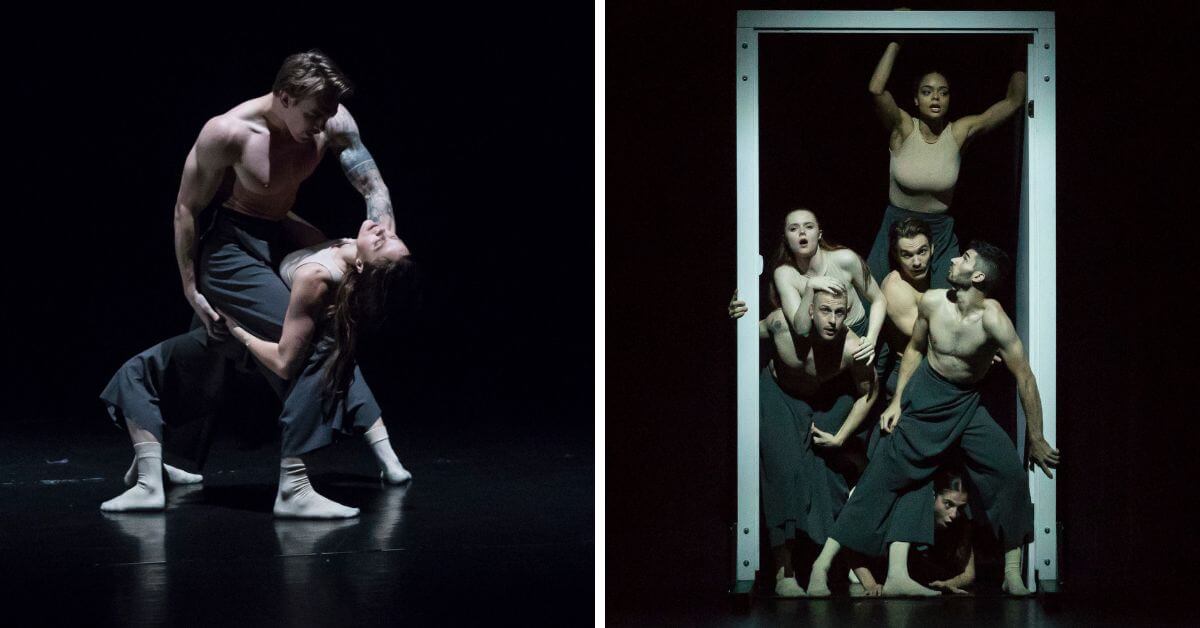
ProArteDanza/Night Shadows, choreographed by Roberto Campanella & Robert Glumbek (in collaboration with the dancers), Fleck Dance Theatre, to Nov. 11. Tickets here.
At the end of ProArteDanza’s new full-length piece Night Shadows, the company earned its usual whoops and hollers from the very appreciative audience. Clearly, they have another hit to add to their trophy bag.
The Dora Award-winning company performs contemporary ballet. By that, I mean that the dancers need ballet training to execute the movement. Technique is important, especially when they have to negotiate the intricate and often arduous movement constructed by co-choreographers Roberto Campanella and Robert Glumbek. The former is artistic director and the latter is associate director of ProArte.
This is where I repeat my age-old clarion cry. Why, after 19 years of existence, does this company not have a higher profile in the country — or even internationally?
The duo always begins their new piece with a premise of substance. In this case, Night Shadows was initially inspired by the four Jungian archetypes (which sent me scurrying to Wikipedia). The archetypes are persona (the different masks we wear), shadow (what we repress), anima/animus (the feminine/masculine ideal), and self (the person’s total “individuation”).
Thus, as their press material proclaims, the piece is exploring the intricate realms of the human psyche — but, there is also an overlay. The choreographers have added in the concept of night, when we are at our most vulnerable, when we allow our hidden demons to bubble up to the surface. Thus, as one can see, there is a lot of fodder for movement development and investigation (and the program cites the participation of the dancers in the creation of Night Shadows).
The production elements are always important in a ProArte work. The central image of Night Shadows is a large white door (by Steel & Oak Designs), which is moved around the stage by the dancers — clearly the metaphorical entry to the deeper workings of the mind. The other side of the door is mirrored, which adds many possible images of perception of self.

Noah Feaver’s lighting is a marvel of moody shadows, while Krista Dowson has cleverly costumed the nine dancers in a shell top, and a lower tunic that is both pants and skirt, which conveys male/female androgenous imagery.
Music is also a key component in a ProArte performance, and the choreographers have kindly listed in the program the six pieces that form the score of Night Shadows, all carefully integrated into a soundscape by Eric Cadesky. From Chopin and Shostakovich, to Max Richter and Joep Beving, to Clint Mansell and the Kronos Quartet, we traverse the quiet beauty of a nocturne, a vibrant waltz, and dissonant, edgy, uber-modern electronica.
I would, at this point, also state that one can come to a ProArteDanza performance of Night Shadows without knowing anything of the details I have alluded to above. So rich is the movement, so wonderfully trained are the dancers, so sophisticated the patterns, so stunning the stage pictures, that the audience can just sit back and be assaulted by the overwhelming choreographic entity.
In other words, Night Shadows is the quintessence of what Campanella and Glumbek have always done — in fact, what they are known for — and that is, to create masterfully constructed dance pieces that speak volumes through the dancers’ bodies. Evocative and punishing physicality, coupled with breathtaking partnering, ensure that you are witnessing a dance performance to the max.
But, Night Shadows has a surprise element. There are four short pieces of voiceover narration by theatre artist Paula Wing, written by Campanella, that are simply hilarious.
In fact, the first comes after a poignant, angst-ridden trio by three women, each in her own shaft of light, that begins the piece. Just as I was settling in for an evening of sturm und drang, along comes the cheeky voice of Wing warning us that we might be witnessing a nervous chicken trying to look like Karen Kain. What a dose of reality! As the piece progresses, the choreographers have also layered in other incidents of sly humour.
It is just such clever tactics that make Night Shadows a vintage Campanella/Glumbek creation — gorgeous to look at, while adding layers of meaning to the movement.
Are you looking to promote an event? Have a news tip? Need to know the best events happening this weekend? Send us a note.
#LUDWIGVAN
Get the daily arts news straight to your inbox.



